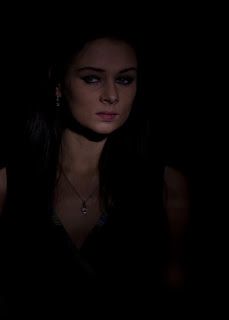Photography is nothing more than recording light. Light is more frequently talked about by Pros than cameras or lenses. It is the understanding of light and how to manipulate it that sets them apart. In the next series of posts I will be discussing how you, yes you, can control light using camera settings. There are three basic ways of controlling light in camera: shutter speed, F-stop, and ISO. In this first post shutter speed will be the topic.
Cameras usually have a variety of different shutter settings. While the shutter is open the camera will record all activity and will allow light to get to the sensor for a specific length of time. The speeds are usually stated as 15, 30, 60, 125 etc. but they are actually 1/15th a second, 1/30th a second, 1/60th a second and 1/125th a second. There are some P&S's that do not allow for changes in settings, but most do. DSLR's usually allow for much higher shutter speeds than P&S's. Shutter speeds can be as fast as 1/8000th of a second. There will frequently be shutter speeds as slow as 30 seconds. On many cameras there will also be a bulb setting. With bulb you can slow the shutter speed to any length of time even a week (longer) if you choose. It is important to understand shutter speeds effects motion and light.
Shutter speed has a direct effect on light. The longer the shutter speed the more light gets to the sensor and a faster shutter speed causes less light to get to the sensor. If too much light gets to the sensor it will result in an overexposed photograph. (Example)
I should have used a faster shutter speed. If the shutter is not open long enough the photograph will be underexposed. Example:
I should have used a slower shutter speed.
Consider this situation. A photographer is at the Grand Canyon at daybreak. He sets his camera up on a tripod, and adjusts the shutter speed to 1/15th of a second. There is little light and the photographer has elected a slow shutter speed. Our photographer becomes overwhelmed with the beauty and falls into the canyon with his camera. He knows he is about to die. He decides to take one last photograph, and clicks the shutter. Folks that photograph will be ugly. He is moving at too great a speed, and he is shaking from fear. There is not a chance his photograph will freeze action. It will just be a blur. This is the photograph:
Wait just before he hits the ground Superman appears and saves him. Just then the photographer sees an eagle diving at top speed in an effort to catch lunch. The photographer politely asks Superman to help him take the picture. Superman stops and holds the camera rock solid so there would be no camera shake. The photographer clicks the shutter. Yes he screwed up again. Eagles can fly at around 40 MPH. Subject blur. Yes, that eagle is going way to fast for a shutter speed of 1/15th of a second. This is the photograph:

The challenge for the photographer is to balance the need for shutter speed against the light of the subject. I normally shoot sports or wildlife at no less than 1/500th of a second. If it is dusk, sunrise, or a poorly lit gym, I may have to sacrifice shutter speed and risk blur to get the shot. The blur may the result of camera shake or subject motion. If you are shooting a 2 year old indoors then the challenge is to get the 2 year to stand still or use a fast shutter speed. Super glue could be a solution, but frequently parents object. So the answer is to increase shutter speed. If there is not enough light to increase the shutter speed then the resulting photograph will probably go over to the dark side (underexposed).
This is the first step understanding light and photography. Next I will add another element ISO to control light, and make the balancing act a little more difficult.




No comments:
Post a Comment